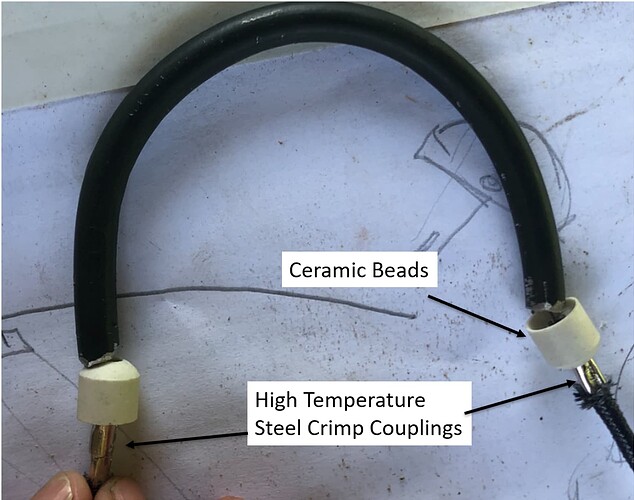Hello everyone! This post overviews a new method to connect our resistive heaters to the wires that lead to solar panels. Our standard procedure with copper crimping has not been consistent.
The resistive heating element shown above contains Nichrome wire. Most ISECs up to date have connected nichrome wire directly (by crimp) to copper wire. The copper wire then leads to solar panels.
The standard procedure for building Direct Connect (DC) ISECs has been to use copper tubing to crimp the nichrome wire to the silicone-coated copper wires. This creates an electrical connection. The connection point is then held together and glued to the pot using JB-weld. The whole system is covered by aluminum sheeting.
It has been found that the biggest weakness of this ISEC design is the connection
point. When connected to solar panels, the copper crimp becomes the hottest part of the circuit, and the most common point of failure. The industry standard is to electrically connect nichrome wire to steel, by either spot welding or crimping.
The first step is identical to the original method: Saw off a part of the resistive heating element to expose the nichrome wire
The new method of connection is similar to the previous procedure. Connect the nichrome wire to the fiberglass-coated steel wire by crimping with the high-temperature steel crimps. Use a ceramic bead in order to preserve the connection. The steel wire is a poor electrical conductor, so it will prevent the connection point from getting too hot. Since this wire is expensive ($1 a foot), it is ideal to only use a few inches of steel wire to reach a cooler point. You can then crimp the other end of the steel wire to copper power wires that lead to the panels.
It also works as a necklace! But still more effective on an ISEC.








